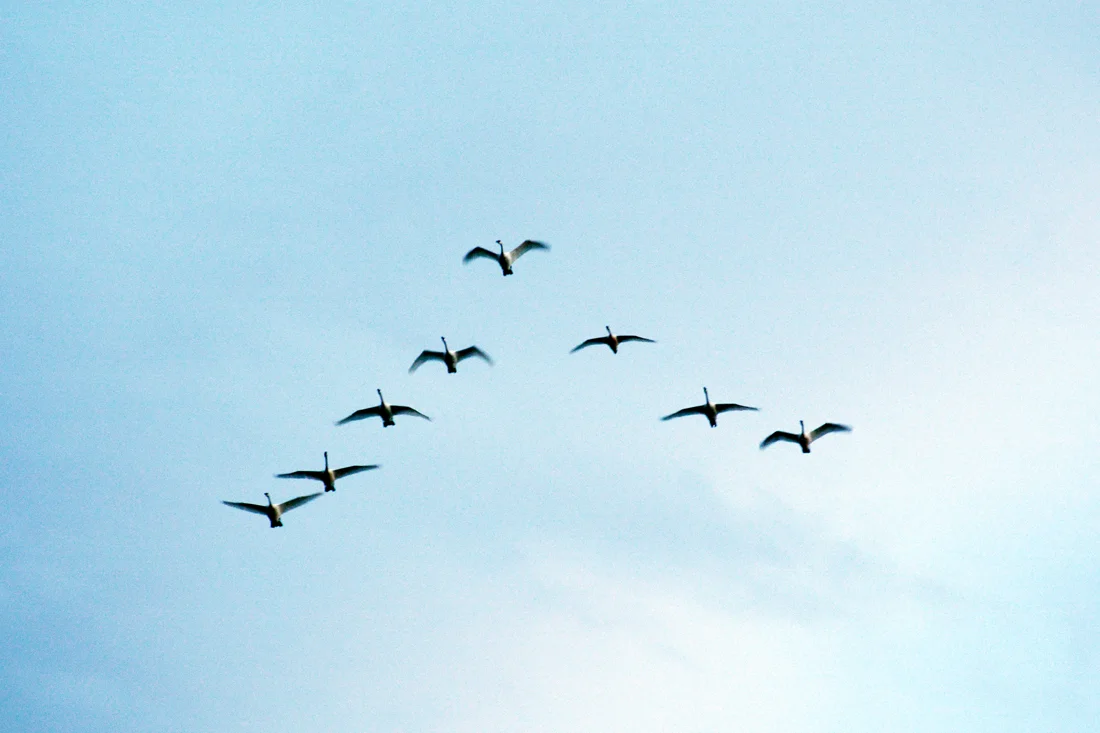Trumpeter swan populations inch toward recovery
Two more trumpeter swans grace the waters of the Blackfoot Valley, although they were a little hesitant to dive into freedom, maybe sensing the responsibility they carry.
Honking like Ford Model T’s and waving their splayed black feet, two yearling trumpeter swans were carried to the edge of Jones Lake, where volunteers gently placed them in the water on Saturday.
But rather than swimming away as their predecessors have done, the birds started waddling back toward their cages and the crowd of a dozen or so onlookers.
Finally encouraged to return to the water, they swam out to follow more than 165 other swans that have been released on the lake over the past decade, thanks to a partnership led by the Blackfoot Challenge.
The intent of the reintroduction program is to establish a breeding population of swans in the valley.
After being eliminated from many regions a century ago by people who wanted to harvest their feathers for hats, trumpeter swans remain a species of concern with declining or low populations and limited distribution in Montana.
Montana Fish, Wildlife & Parks set a goal in 2005 of seven nesting pairs in the Blackfoot valley. But it hasn’t been easy.
Swans migrate away each year, and only around 40 of the introduced swans have returned to the Blackfoot Valley over the years. Watchers know how many because the introduced swans sport distinctive red collars.
Bird watchers have reported other Blackfoot swans showing up from Augusta to Rexberg, Idaho.
This spring, the Blackfoot Challenge reported that 16 returned to the Blackfoot area starting in March, although many unbanded swans also stop through the valley.
Swans are released at 1 or 2-years-old but don’t start breeding until they’re 3.
Sometimes banded birds couple with wild swans and do their best to raise young. Earlier this month, volunteers reported seeing parents with three cygnets on a pond near Ovando.
Last year, five pairs tried to nest in the Blackfoot, but most weren’t successful. That’s one reason it can take years to establish a trumpeter swan population.
Eggs sometimes fail to hatch due to environmental conditions, or predators can poach eggs or kill cygnets.
While the Blackfoot Challenge continues to nurture its trumpeter swan population, others in western Montana have also been reintroductions.
The Confederated Salish-Kootenai Tribes started their reintroduction program in the mid-1990s and have released more than 240 swans on the reservation since 2002. A number of birds have remained on the reservation to produce about 180 young over the past 12 years, although the number of nesting pairs has been slow to grow.
Collisions with power lines can be a major cause of death, and trumpeter swans mate for life. So if one swan dies, two are eliminated from the breeding population.
Loss of habitat has also hurt the species, so over in the Madison River Valley, a five-year program of reintroductions was started in 2012 after some of the historic wetlands were restored.
Trumpeter swans left the Madison Valley after farmers drained area wetlands to make hay fields.
“In the U.S., particularly the Montana-Idaho-Wyoming area, swan numbers have been dwindling for the past few decades,” said FWP partnership coordinator Tom Hines in 2012. “We need more successful wetland restorations like this – the swan introduction just put a point on it for us.”
Farther south in the Red Rock Lakes National Wildlife Refuge near the Centennial Mountains where habitat has remained intact, the birds have maintained a foothold year-round without any help.
So the establishment of three or more nesting populations would go a long way toward restoring the species.
And maybe the two new residents of the Blackfoot Valley will help the area meet its nesting population goal in a few more years.
